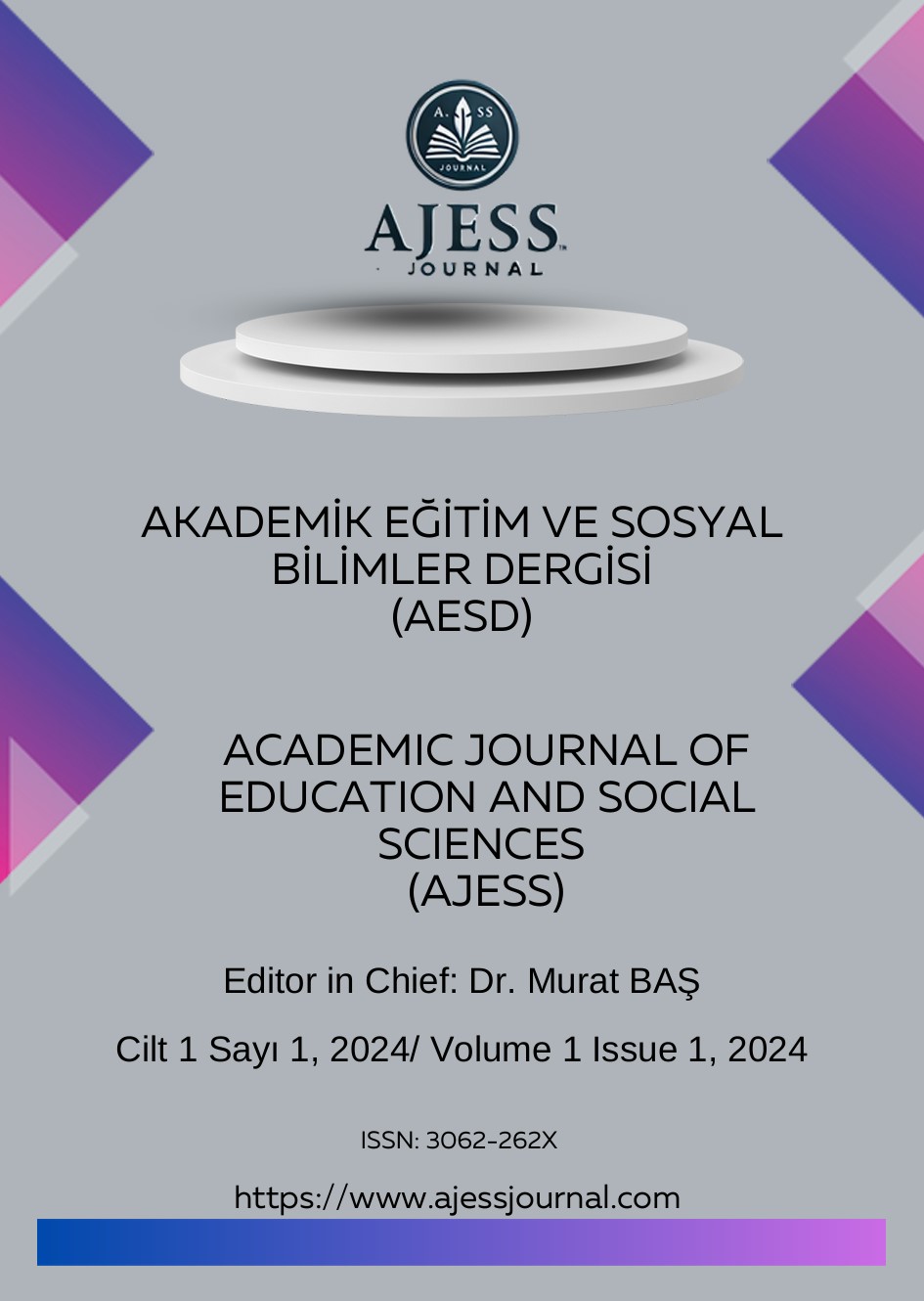Satan, H. %Kaya, M. Examining the Use of Web 2.0 Tools in Mathematics Classes from the Perspective of Primary School Teachers
Main Article Content
Abstract
In recent years, the rapid development of educational technologies has encouraged the adoption of innovative approaches in teaching processes. Mathematics education is of critical importance in terms of developing analytical thinking and problem-solving skills. In this context, the integration of Web 2.0 tools into teaching processes can increase students' interest in mathematics lessons and make learning processes more effective. The aim of the research is to examine the perceptions of primary school teachers regarding the use of Web 2.0 tools in mathematics lessons. In the study conducted with the qualitative research method, data were collected from 80 teachers working in 6 different schools. The data were obtained through semi-structured interviews and evaluated with the descriptive analysis method. The findings show that teachers find Web 2.0 tools more useful in terms of enriched teaching, permanent learning and student motivation. In addition, it was determined that the frequency of use of Web 2.0 tools decreased as the years of seniority increased. This research makes significant contributions to understanding teachers' adaptation to technology and the role of Web 2.0 tools in education.
Article Details
Section
All published content is protected under the CC BY-NC-ND 4.0 license.
How to Cite
References
Aslan, K., Wu, M., Lakowicz, J. R., & Geddes, C. D. (2007). Fluorescent core− shell Ag@ SiO2 nanocomposites for metal-enhanced fluorescence and single nanoparticle sensing platforms. Journal of the American Chemical Society, 129(6), 1524-1525.
Atıcı, B., & Yıldırım, S. (2010). Web 2.0 uygulamalarının e-öğrenmeye etkisi. Akademik Bilişim, 10(1), 10-12.
Atış, D., & Doğaner, E. Ş. (2022). Uzaktan eğitim sürecinde işitme engelli öğrencilere matematik öğretimi ile ilgili öğretmen görüşleri: Türkiye & Romanya örneği. Ordu Üniversitesi Sosyal Bilimler Enstitüsü Sosyal Bilimler Araştırmaları Dergisi, 12(3), 1845-1866.
Bicen, H., & Cavus, N. (2011). Social network sites usage habits of undergraduate students: case study of Facebook. Procedia-Social and Behavioral Sciences, 28, 943-947.
Cavus, N., & Kanbul, S. (2010). Designation of Web 2.0 tools expected by the students on technology-based learning environment. Procedia-Social and Behavioral Sciences, 2(2), 5824-5829.
Dohn, N. B. (2009). Web 2.0: Inherent tensions and evident challenges for education. International journal of computer-supported collaborative learning, 4, 343-363.
Dursun, H., & Tertemiz, N. I. (2021). Çevirim-içi Yapılan Web 2.0 Araçları Öğretiminin Sınıf Öğretmeni Adaylarının Matematik Ders Planlarına Yansıtma Durumlarının İncelenmesi. Turkish Studies-Educational Sciences, 16(1).
Greenhow, C., Robelia, B., & Hughes, J. E. (2009). Learning, teaching, and scholarship in a digital age: Web 2.0 and classroom research: What path should we take now? Educational researcher, 38(4), 246-259.
Grosseck, G. (2009). To use or not to use web 2.0 in higher education? Procedia-Social and Behavioral Sciences, 1(1), 478-482.
Huang, R., Spector, J. M., Yang, J., Huang, R., Spector, J. M., & Yang, J. (2019). Introduction to educational technology. Educational technology: A primer for the 21st century, 3-31.
Karaman, S., Yıldırım, S., & Kaban, A. (2008). Öğrenme 2.0 yaygınlaşıyor: Web 2.0 uygulamalarının eğitimde kullanımına ilişkin araştırmalar ve sonuçları. XIII. Türkiye’de İnternet Konferansı Bildirileri, 22(23), 35-40.
Kıyıcı, F. B., & Yiğit, E. A. (2010). Science education beyond the classroom: A field trip to wind power plant. International Online Journal of Educational Sciences, 2(1), 225-243.
Köse, U. (2010). A blended learning model supported with Web 2.0 technologies. Procedia-Social and Behavioral Sciences, 2(2), 2794-2802.
Linn, G. B., Sherman, R., & Gill, P. B. (2007). Making meaning of educational leadership: The principalship in metaphor. NASSP Bulletin, 91(2), 161-171.
Onchwari, G., & Keengwe, J. (2011). Examining the relationship of children’s behavior to emotion regulation ability. Early childhood education journal, 39, 279-284.
Pishghadam, R., & Pourali, S. (2011). Metaphorical Analysis of Iranian MA University Students' Beliefs: A Qualitative Study. Higher Education Studies, 1(1), 27-37.
Solomon, G. (2007). Web 2.0: New tools, new schools. International Society for Technology in Education.
Şimşek, K., & Yıldırım, N. (2016). Constraints to open innovation in science and technology parks. Procedia-Social and Behavioral Sciences, 235, 719-728.
Teclehaimanot, B., & Hickman, T. (2011). Student-teacher interaction on Facebook: What students find appropriate. In: Springer.
Wright, B., & Akgunduz, D. (2018). The relationship between technological pedagogical content knowledge (TPACK) self-efficacy belief levels and the usage of Web 2.0 applications of pre- service science teachers. World Journal on Educational Technology: Current Issues, 10(1), 52-69.



